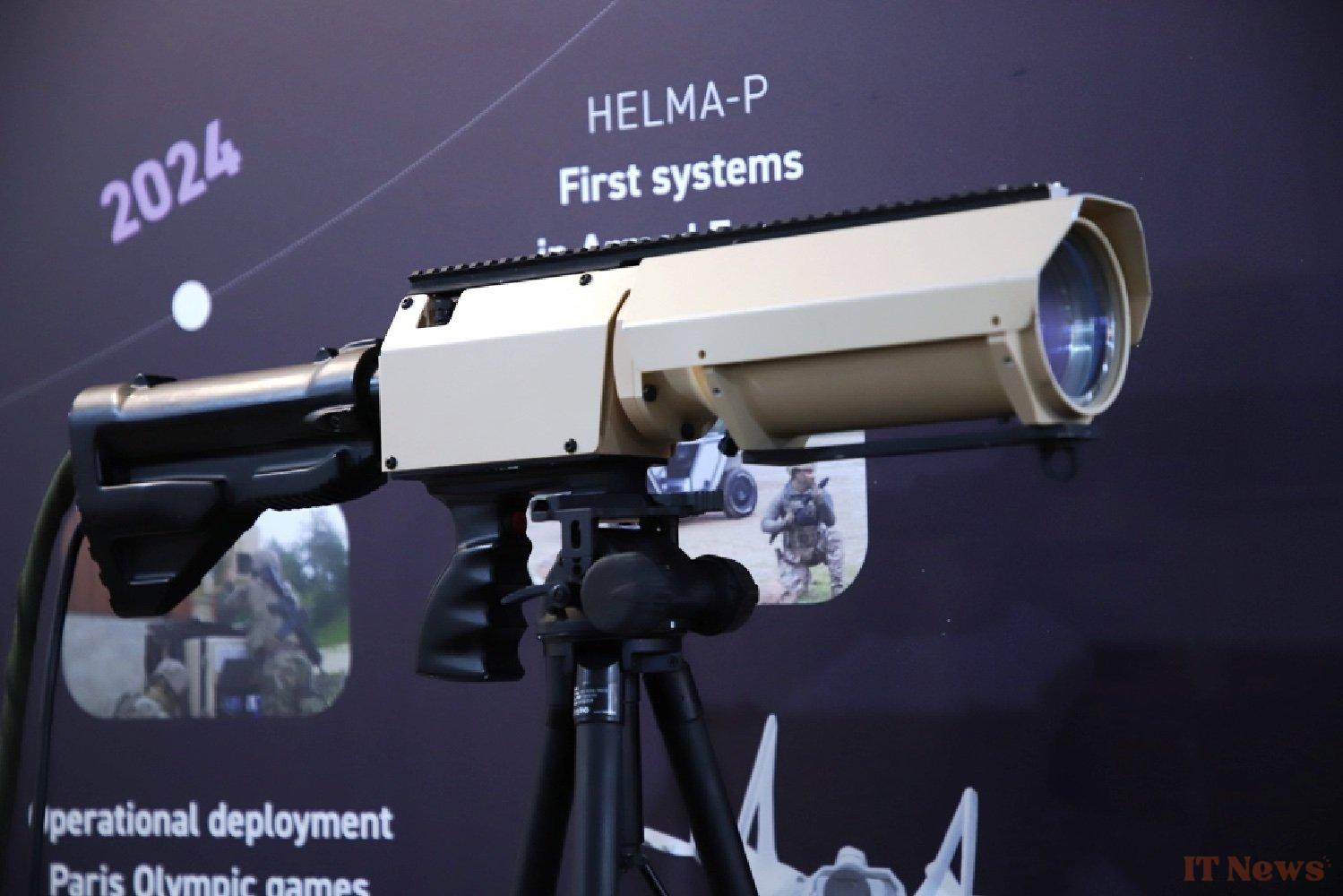It's a prototype that doesn't go unnoticed. The HELMA-LP, presented this year at the SOFINS trade show, is intriguing: its appearance evokes a weapon straight out of a science fiction film like Star Wars. However, this laser rifle designed by CILAS is nothing short of serious.
A science fiction look, but very real
Derived from the HELMA-P system used To protect the airspace against drones during the 2024 Paris Olympic Games, the HELMA-LP offers a more compact version, designed for portable use. The device consists of a laser cannon mounted on an AR-15-type frame, connected by two cables to a backpack containing the batteries. The whole thing weighs approximately 15 kg.
The HELMA-LP is primarily intended to destroy static targets such as tarpaulins, electronic equipment, or optronic systems (cameras, sights, etc.). It can hit a target between 300 and 500 meters, with an exposure of 5 to 15 seconds depending on the resistance of the targeted material. The beam has a diameter of 20 mm at 500 meters, and its maximum continuous firing time is 60 seconds.
Even if CILAS does not communicate the exact power of this portable version (less than that of the fixed HELMA-P model), the thermal effect of the laser is enough to melt or blind sensitive components, such as the plastic lenses of drone cameras. The Turkish Gökberk system has demonstrated that such a beam, even of low intensity, can neutralize a drone without destroying it.
The HELMA-LP, silent and invisible, is designed to surprise the enemy. It can be used on the ground, in a prone position, the backpack then serving to stabilize the shot. A visible or infrared sight can be added to facilitate aiming.
Another advantage: the HELMA-LP is transportable by plane and operates between -20°C and +35°C, which makes it usable in all kinds of environments. It is already of interest several manufacturers, particularly those developing remote-controlled weapon stations (RCWS). The idea would be to integrate this laser technology into remote-controlled platforms to complete their arsenal.
CILAS states that several engagements can be carried out without recharging the batteries, which would benefit from an "interesting autonomy". This would allow for extended operational uses, particularly for missions to quickly neutralize sensitive equipment, without noise or possible detection.



0 Comments